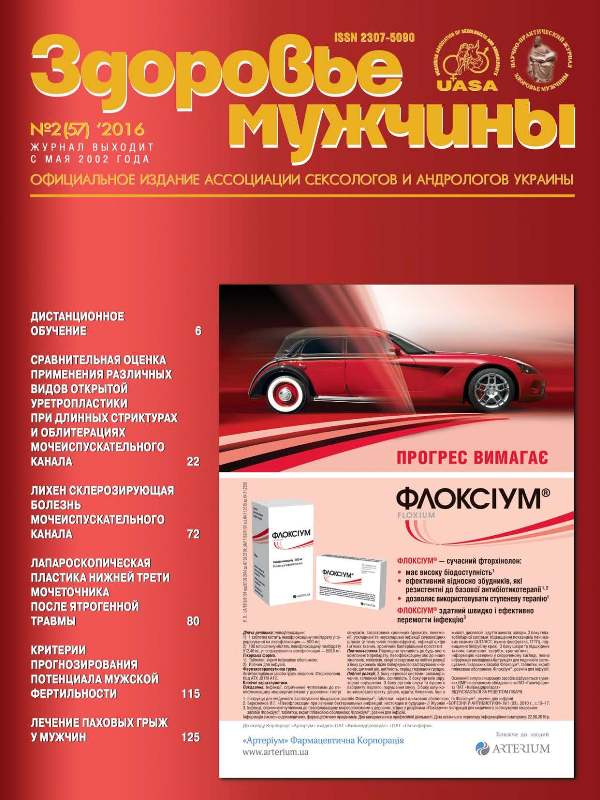Criteria for predicting male fertility potential
##plugins.themes.bootstrap3.article.main##
Abstract
##plugins.themes.bootstrap3.article.details##

This work is licensed under a Creative Commons Attribution 4.0 International License.
Authors retain the copyright and grant the journal the first publication of original scientific articles under the Creative Commons Attribution 4.0 International License, which allows others to distribute work with acknowledgment of authorship and first publication in this journal.
References
Markova E.V., Zamaj A.S. Fragmentacija DNK v spermatozoidah cheloveka (obzor literatury) // Problemy reprodukcii. – 2006. – № 4. – S. 14–20.
Juz'ko O.M., Zhilka N.Ja., Rudenko N.G., Al'oshina G.M., Juz'ko T.A. Dopomizhni reproduktivni tehnologii' v Ukrai'ni // Reproduktivna medicina. – 2012. – № 3. – S. 15–19.
Agarwal A., Nallella K., Allamaneni S., Said T. Role of antioxidants in treatment of male infertility: an overview of the literature // Reprod Biomed Online. – 2004. – № 8 (6). – P. 616–627.
Ahmadi A., Ng S. Fertilizing ability of DNA-damaged spermatozoa // J Exp. Zool. – 1999. – № 284. – P. 696–704.
Baker M., Aitken R. Reactive oxygen species in spermatozoa: methods for monitoring and significance for the origins of genetic disease and infertility //Reprod Biol Endocrinol. – 2005. – № 3 (67). – P. 1477–7827.
Carrel D., Liu L., Peterson C., Jones K., Hatasaka H., Ericson L. et al. Sperm DNA fragmentation is increased in couples with unexplained recurrent pregnancy loss // Arch. Androl. – 2003. – № 49. – P. 49–55.
Erenpreiss J., Spano M. et al.Sperm chromatin structure and male fertility: biological and clinical aspects // Asian J Androl. – 2006. – № 8 (1). – P. 11–29.
Greco E., Iacobelli M., Rienzi L., Ubaldi F., Ferrero S., Tesarik J. Reduction of the Incidence of Sperm DNA Fragmentation by Oral Antioxidant Treatment // J Androl. – 2005. – № 26 (3). – P. 349–353.
Guzick D., Overstreet J., FactorLitvak P. et al. Sperm morphology, motility, and concentration in infertile and fertile men //N Engl J Med. – 2001. – № 345. – P. 1388–1393.
Nicopoullos J., Gilling-Smith C., Almeida P., Homa S., NormanTaylor J., Ramsay J. Sperm DNA fragmentation in subfertile men: the effect on the outcome of intracytoplasmic sperm injection and correlation with sperm variables. // BJU International. – 2008. – № 101 (12). – P. 1553–1560.





